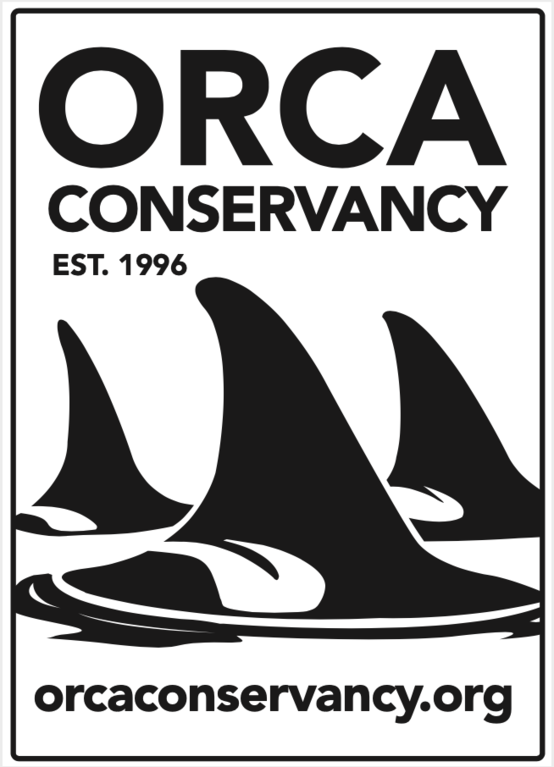Science: Orca Conservancy - 22nd Biennial Conference in Halifax, Nova Scotia
 Orca Conserancy's Dr. David Bain presents "A Model to Assess the Contributions of Prey Availability, Disturbance, and Toxins to the Population Dynamics of Southern Resident Killer Whales"
Orca Conserancy's Dr. David Bain presents "A Model to Assess the Contributions of Prey Availability, Disturbance, and Toxins to the Population Dynamics of Southern Resident Killer Whales"
Orca Conservancy's President Shari Tarantino: Hi Dave! Orca Conservancy is thrilled that you were chosen to give an oral presentation at the 22nd Biennial Conference on the Biology of Marine Mammals. Please tell us what you will be discussing and why this scientific research will benefit the endangered Southern Resident killer whales moving forward...Dr. David Bain: The exact number of endangered Southern Resident Killer Whales has been tracked for over 40 years. Recovery planning has been based on the assumption that 3 factors are primarily responsible for population trends:  prey availability, disturbance, and bioaccumulation of toxic chemicals. Prior studies have addressed these factors separately, and have established timelines for them. In this study, I develop a model that includes all three. The model is based on generalized logistic population growth and uses annual population change to infer variation in carrying capacity based on the three factors. Following the end of collections for public display, the population tended to increase to return to its carrying capacity. When Chinook salmon abundance began to decline, the population continued to increase, with disturbance from vessels reduced as fishery closures expanded. The population began to decline after salmon abundance bottomed out, in synchrony with increasing disturbance. When disturbance leveled out, the population began to fluctuate with salmon abundance. Carrying capacity appears to have declined from a peak of about 100 in the mid-1990’s to a low of about 80 at present. Toxins appear to limit the potential rate of increase of Southern Residents relative to other killer whale populations, but toxin loads change more slowly than population trends. The implication of the model results for the-three factor assumption will be discussed, along with the implications for the magnitude of increases in salmon abundance and reduction in disturbance needed to result in steady population growth over time.Shari: Thank you Dave for all your hard work! We are looking forward to hearing more about the conference when you return. Good Luck!###For those of you attending the conference in the Halifax, here's all the information:Where: World Trade and Convention Centre
prey availability, disturbance, and bioaccumulation of toxic chemicals. Prior studies have addressed these factors separately, and have established timelines for them. In this study, I develop a model that includes all three. The model is based on generalized logistic population growth and uses annual population change to infer variation in carrying capacity based on the three factors. Following the end of collections for public display, the population tended to increase to return to its carrying capacity. When Chinook salmon abundance began to decline, the population continued to increase, with disturbance from vessels reduced as fishery closures expanded. The population began to decline after salmon abundance bottomed out, in synchrony with increasing disturbance. When disturbance leveled out, the population began to fluctuate with salmon abundance. Carrying capacity appears to have declined from a peak of about 100 in the mid-1990’s to a low of about 80 at present. Toxins appear to limit the potential rate of increase of Southern Residents relative to other killer whale populations, but toxin loads change more slowly than population trends. The implication of the model results for the-three factor assumption will be discussed, along with the implications for the magnitude of increases in salmon abundance and reduction in disturbance needed to result in steady population growth over time.Shari: Thank you Dave for all your hard work! We are looking forward to hearing more about the conference when you return. Good Luck!###For those of you attending the conference in the Halifax, here's all the information:Where: World Trade and Convention Centre 1800 Argyle St, Halifax, NS B3J 3N8, CanadaWhen: Wednesday, October 25, 2015Time: 16:30 - 16:44Location: Rm 200DProgram Track/Topic: Conservation
1800 Argyle St, Halifax, NS B3J 3N8, CanadaWhen: Wednesday, October 25, 2015Time: 16:30 - 16:44Location: Rm 200DProgram Track/Topic: Conservation
